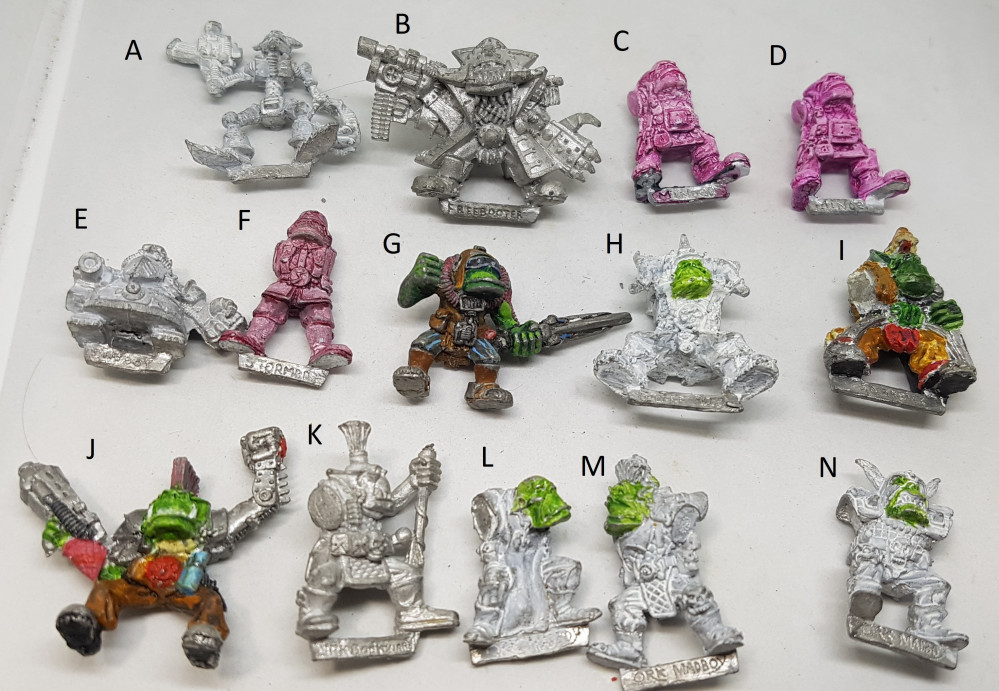
Identifying, Updating, and Painting a Bucket of 90's Era 40K Orks with Lawnor
Basing the Orks
So here’s my steps. I wash my bases at the same time I was the components of my models. I also clean the rims off as they often have protrusions. I clip the tab off the bottom of my models and glue some pins in to its feet. I line it up where I want it on the base and use one pin to mark a hole I then drill through. I put the model back over the base with its pin through that hole and scratch a path with the other. I then drill the other hole, and test the fit, re-drilling if warranted. Scratching up the base after this can give glue and basing materials something extra to stick to.
The base was then given a thick coat of GW Martian Ironcrust and left overnight to dry. Give it plenty of time as the next stage gets it wet again and it is takes a very long time to dry all the way through. You want the cracks to be fully developed before the next stage.
It is my experience that old bottles of Ironcrust type GW paints produce better cracks than new ones. If you expect to use some in the future I can recommend buying the bottle 6+ months in advance, cracking the seal, and leaving it with its lid shut somewhere warm, but not hot.
Then it gets flooded with GW Agrax Earthshade and again left overnight to dry.
Does anyone else have a sudden urge for Ginger Biscuits after seeing these pics? I might head to the corner shop in a minute…
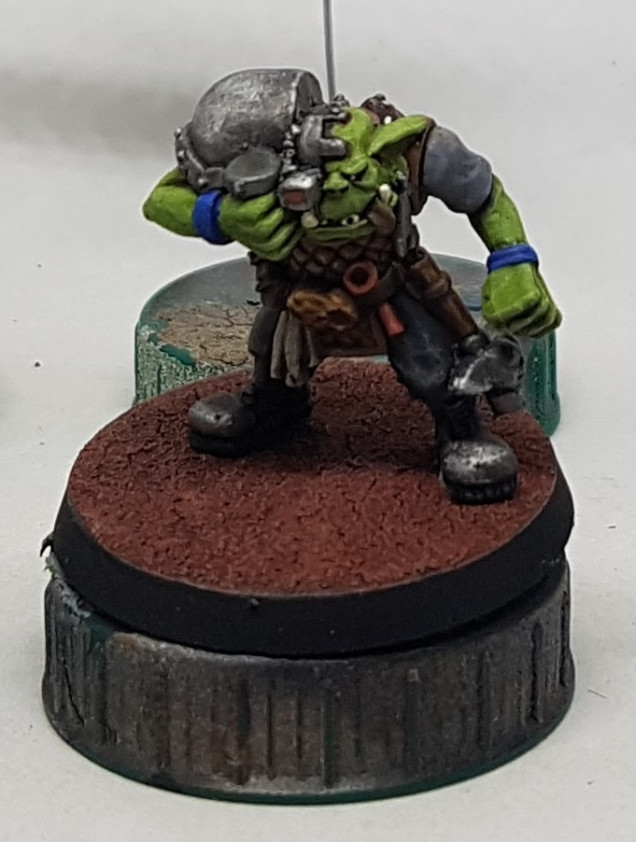 Once dry, it is drybrushed with P3 Beast Hide, and the rims are restored to black. The model is then glued on. It might not look like much, but most of this will be covered up soon.
Once dry, it is drybrushed with P3 Beast Hide, and the rims are restored to black. The model is then glued on. It might not look like much, but most of this will be covered up soon.The model and base are then varnished together and left for long enough to ensure the varnish is no longer sticky. I then coat the base in superglue. PVA would likely dry too thick and be visible. I use Gorilla Glue. The pot comes with a brush as well as a nozzle which is great for covering a surface this large.
On the larger bases (40mm+) I apply a single tuft of Javis Scenics red “jtuft 11 flowers mix tufts 10mm” and then open the bag of Serious Play Baked Canyon Landscape Texture. The green sponge parts are a little large for the scale so I grab one and break off a couple of small pieces and scatter them around the base. I then place the whole model inside the bag and shake the mixture around and all over, taking care not to touch the bag with the glue.
The model is then placed on a clean piece of paper with a single fold down the middle and left to dry along with all the other minis. When I’m done I shake off the excess in to the bag and remove any oversized pieces of cork. Blowing over the mini can help, just be careful of the open bag and any loose scatter! When I’m done the piece of paper is picked up and folded and all the loose scatter is poured back in to the bag. I look at my minis and I am happy.
When my first bag of Baked Canyon was running low I noticed the bases didn’t appear as good. Perhaps the dregs aren’t such a good mix by that stage? However, I have poured them in to the fresh bag and I’m happy with those results. Perhaps it was all in my head?
By the way, that’s a small bag in the photo. I replaced it with a medium which looks about twice the size. I’ve not bought a large yet. I’ve poured it in to a larger bag so there’s room to dunk models in and shake it about.
































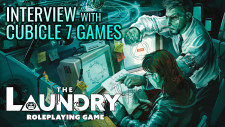
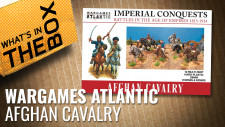
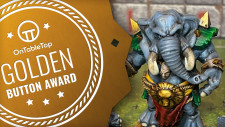
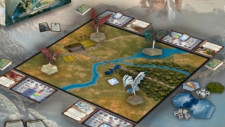
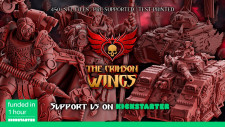
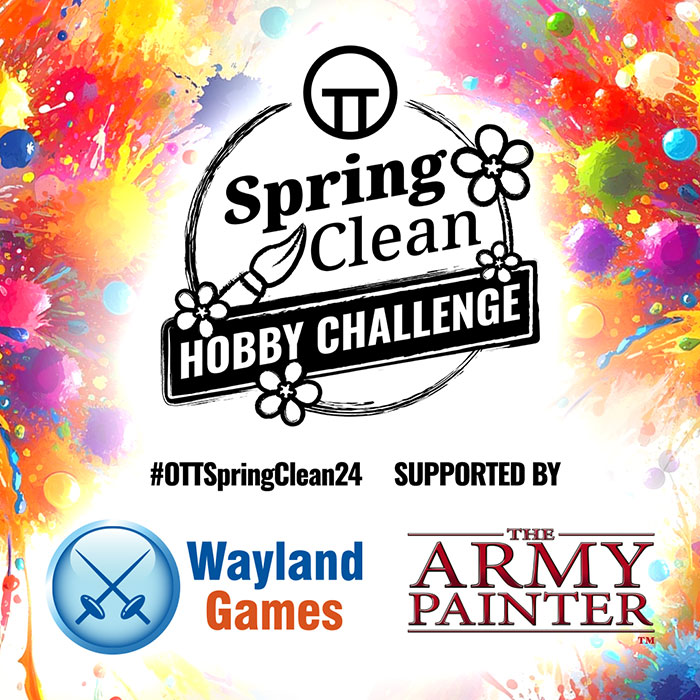

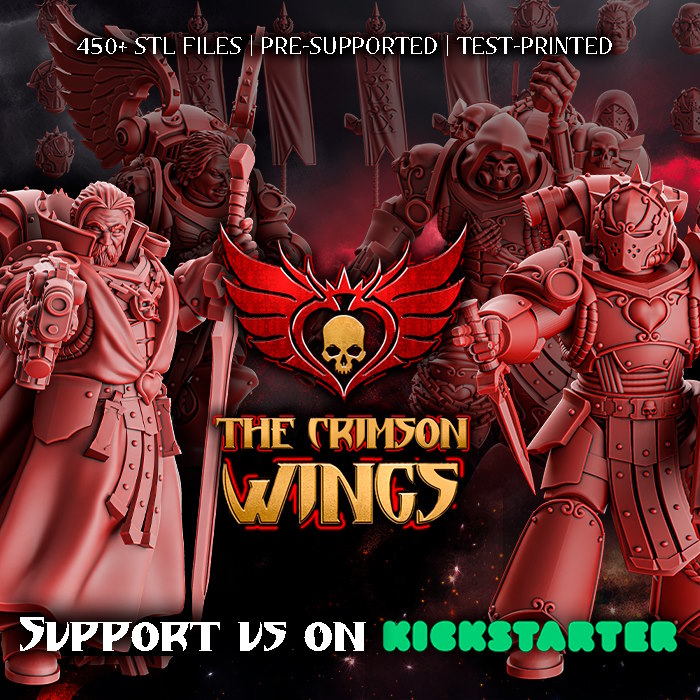

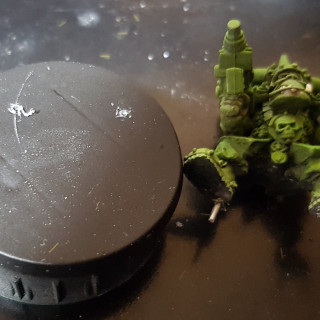
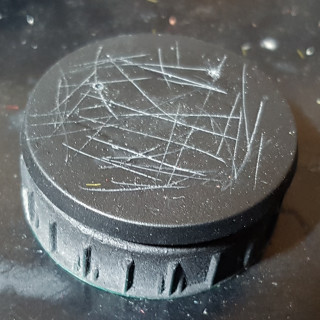

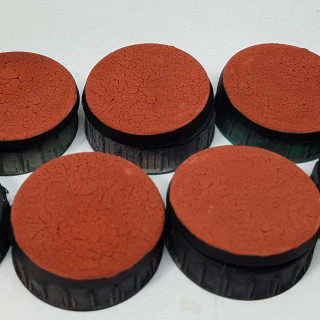
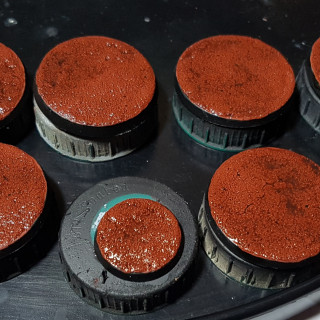
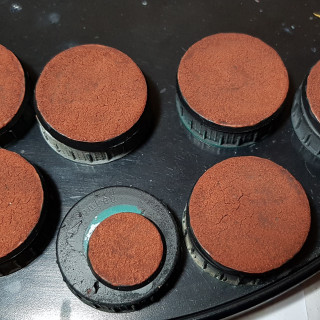
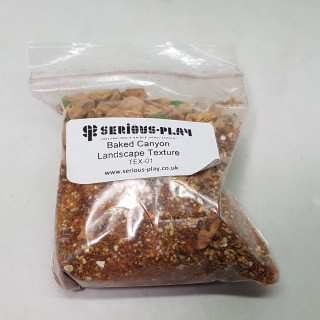
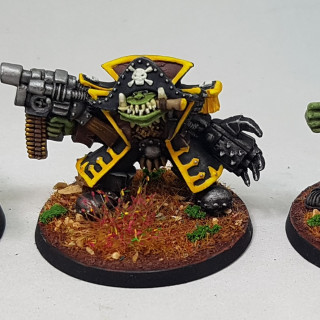
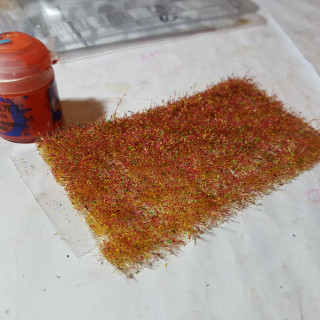
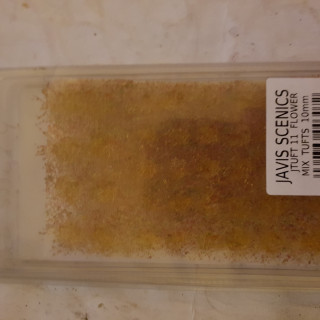
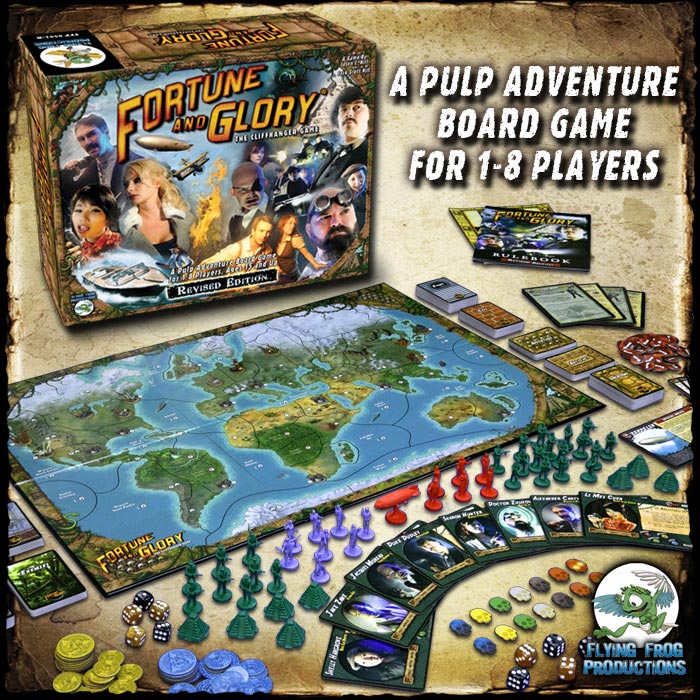

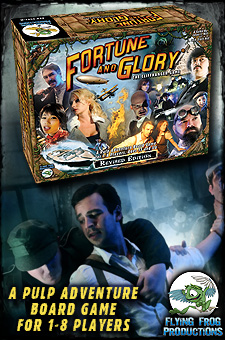
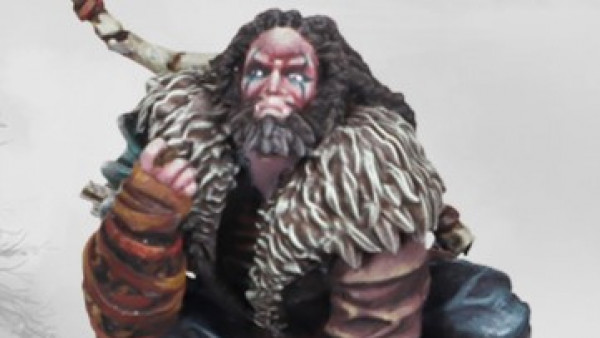
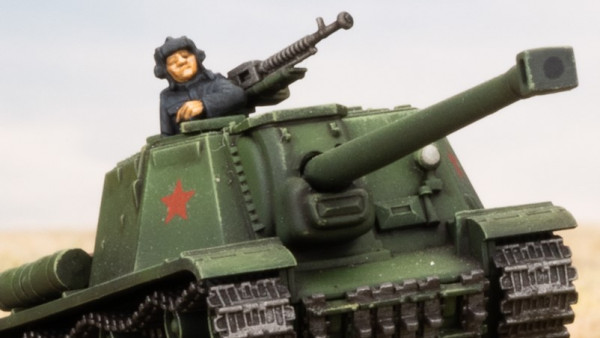
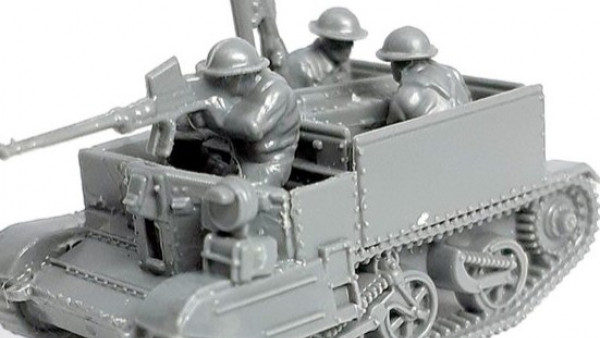
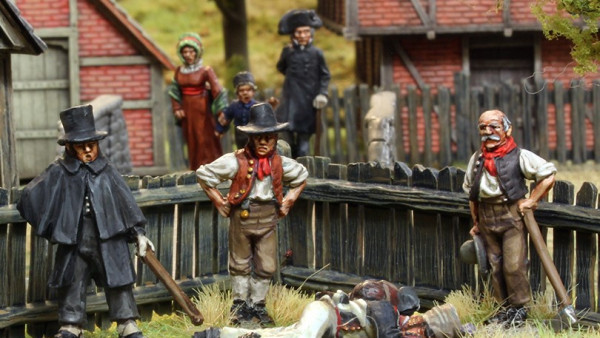

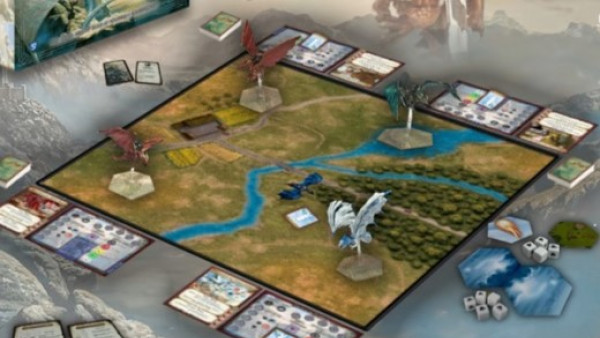
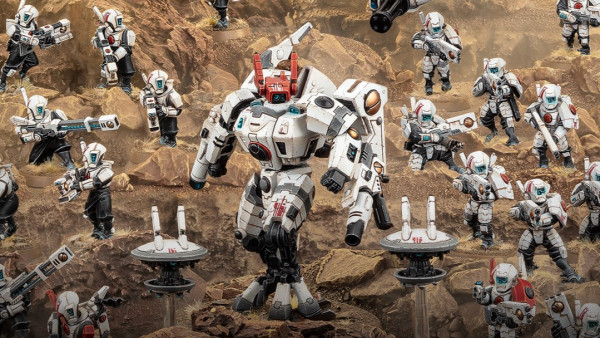
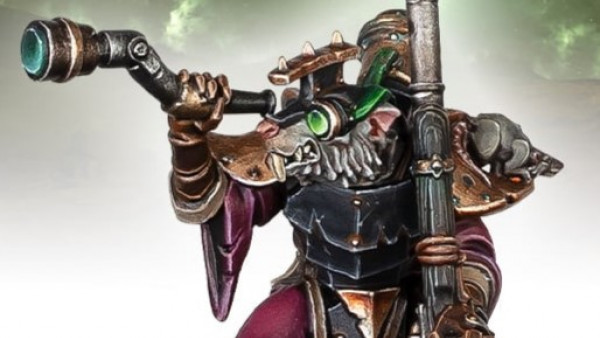
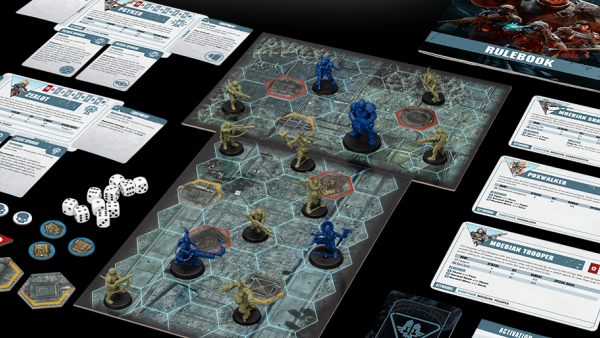
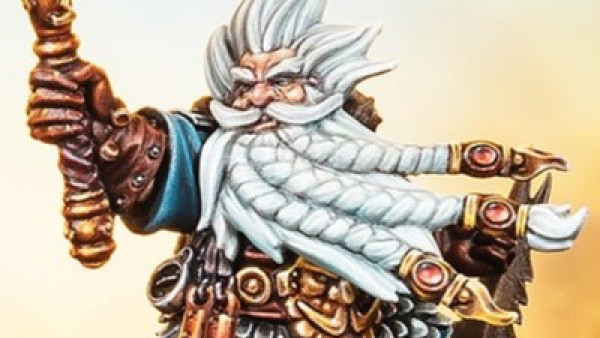

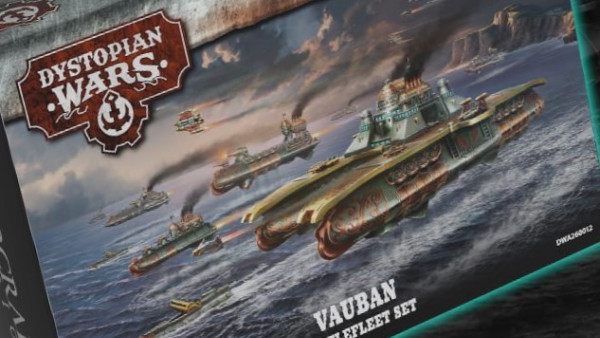
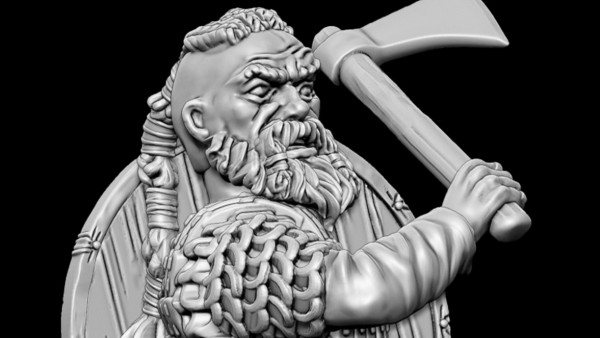



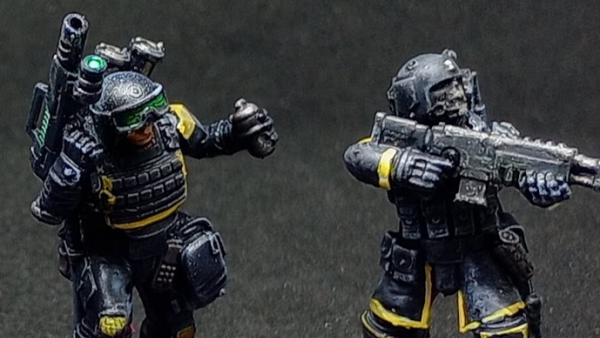
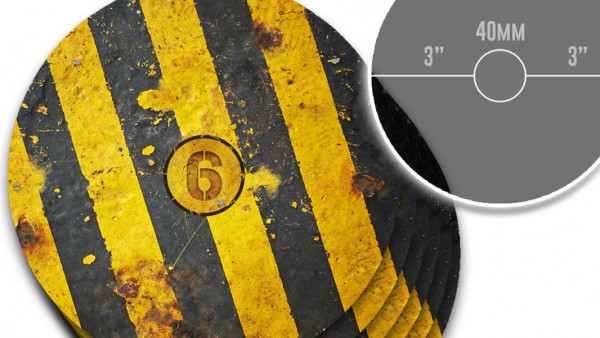












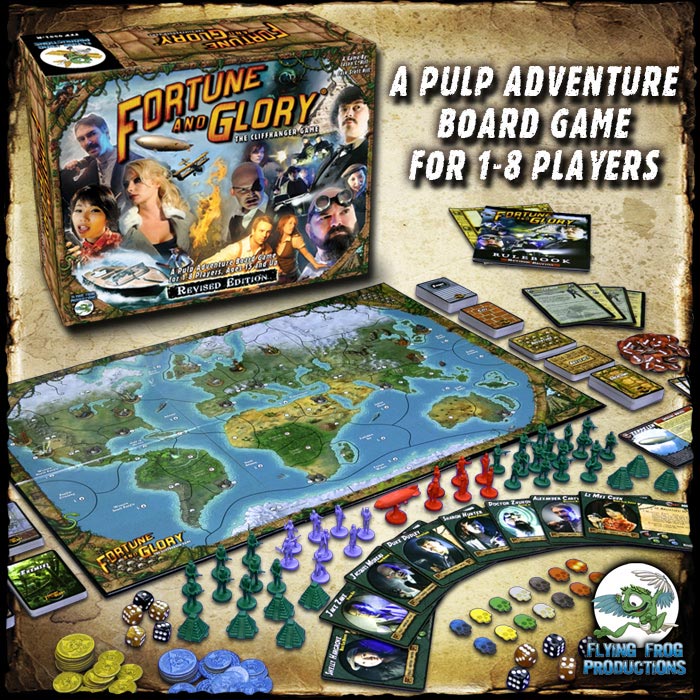

I love these old school orks!!!!
There’s some real character amongst them, definitely.